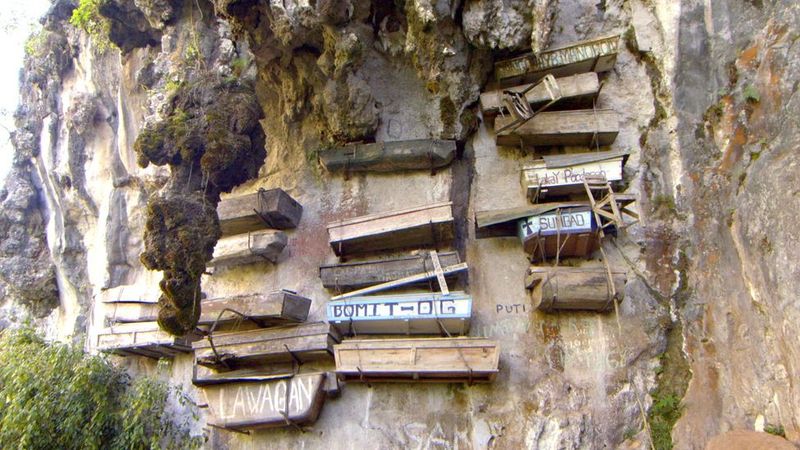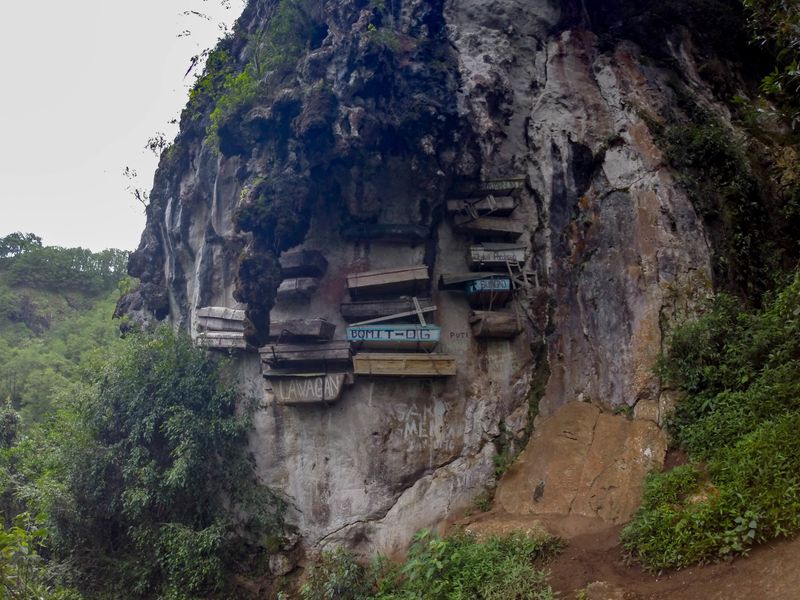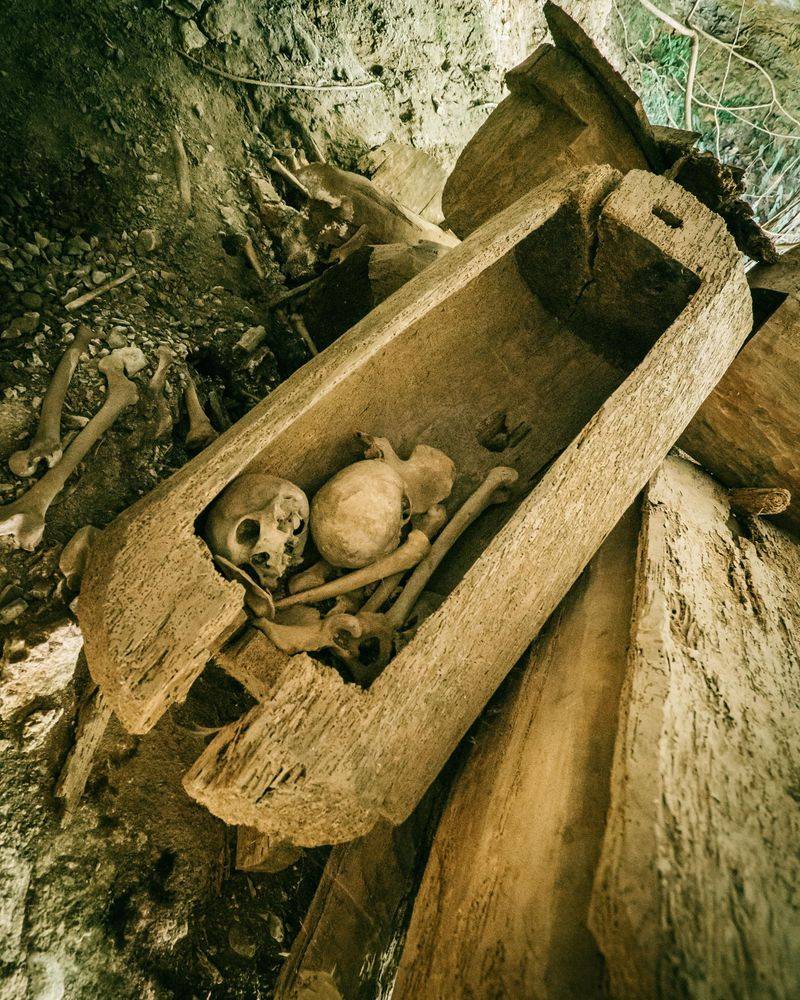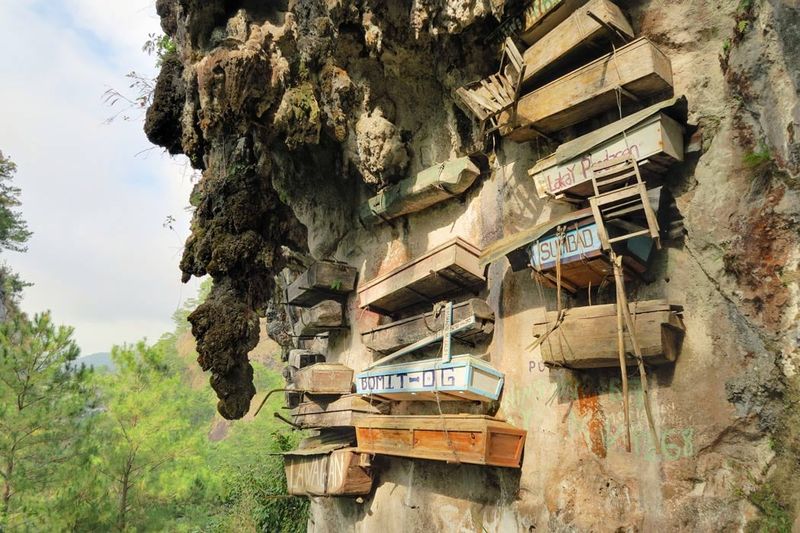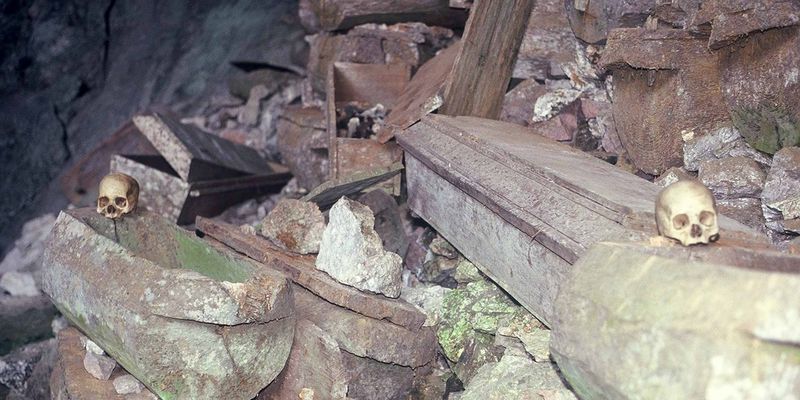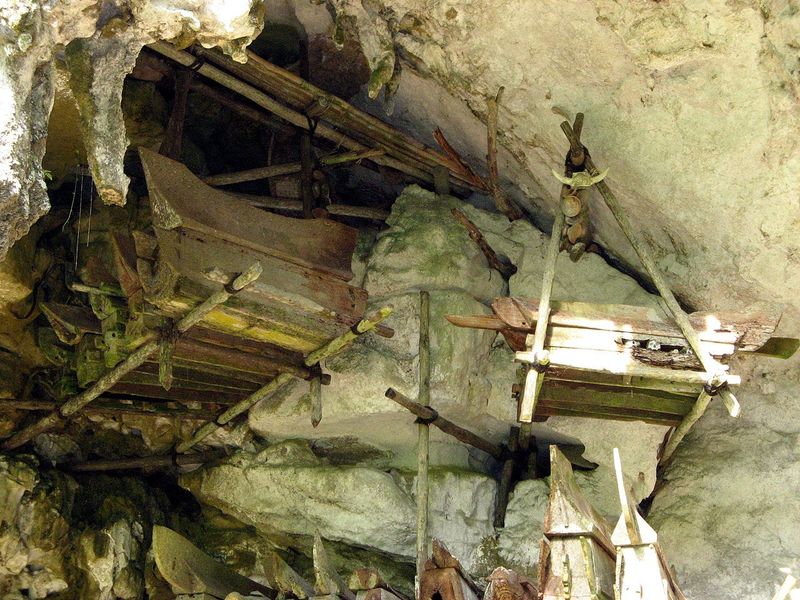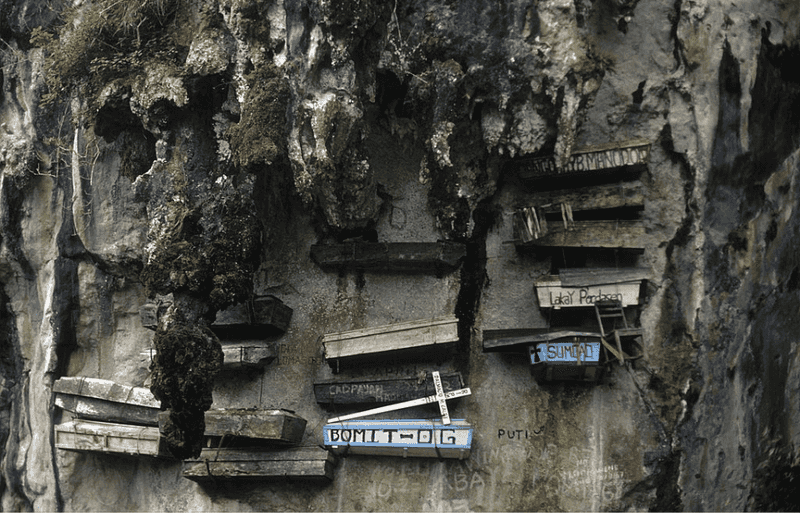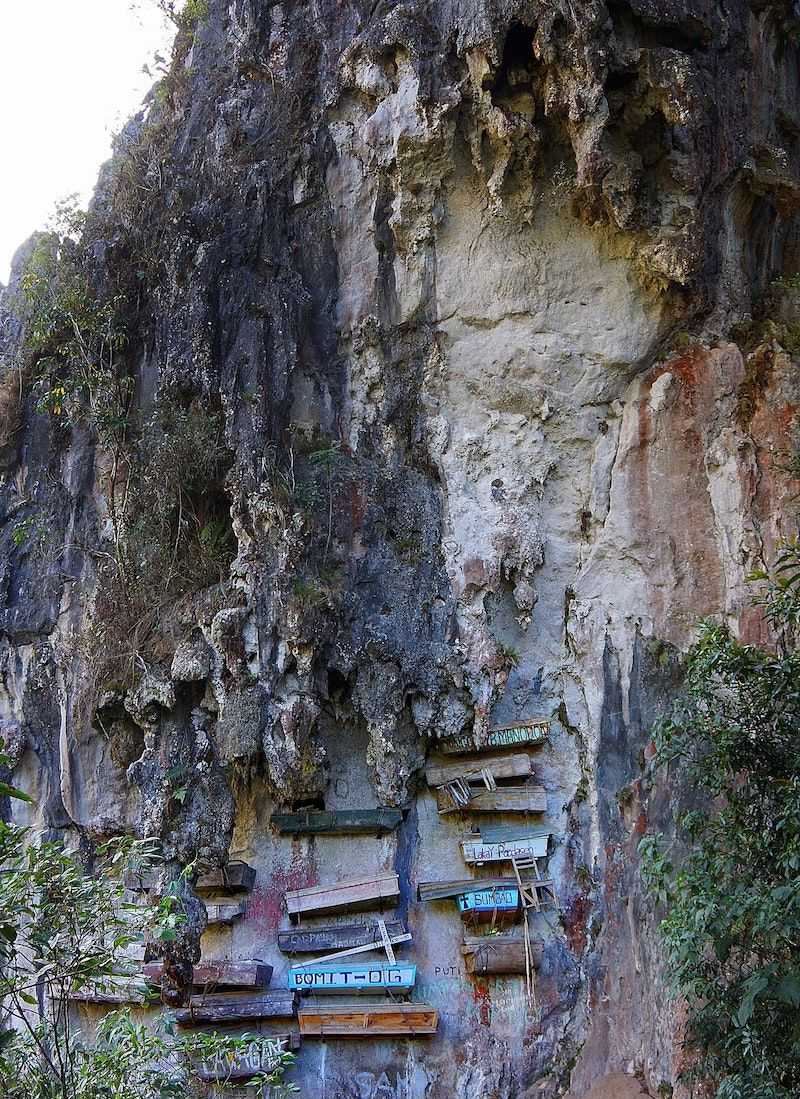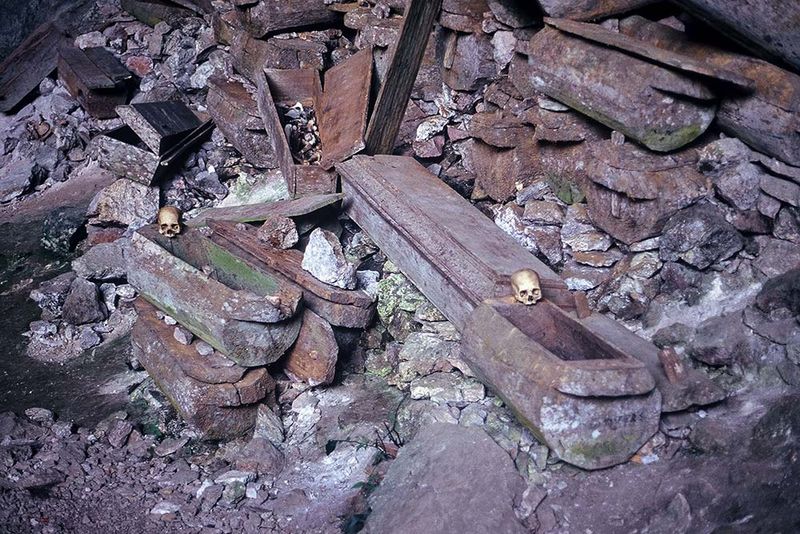Explore the enigmatic world of the Philippine hanging coffins, a unique burial custom that defies time and continues to intrigue modern historians. These ancient coffins, often nestled high on cliff sides, offer a glimpse into the spiritual beliefs and cultural practices of indigenous tribes. Delve into the mysteries that surround these coffins, from their purpose to the stories they silently tell, and uncover the secrets that historians may prefer to keep hidden. Each coffin not only holds the remains of individuals but also the rich history of a tradition that challenges the conventional.
1. The Coffins Predate Christianity & Islam
Long before Spanish colonizers introduced Christianity and Islamic missionaries came to the Philippines, the indigenous people had sophisticated burial customs. The hanging coffins, some over 2,000 years old, are a testament to this rich cultural heritage. These coffins, suspended high on cliff faces, suggest spiritual beliefs that predate major religions. They are a window into the ancient world, where the living sought to honor and protect their dead from earthly and spiritual harm. The craftsmanship and dedication involved reflect a deep respect and understanding of life and death.
2. They Were Meant to Stop the Dead from Returning
For some indigenous tribes, burying the dead in the ground risked them returning as spirits. The hanging coffins, positioned closer to the heavens, served as a spiritual safeguard. This practice was rooted in a belief system where the deceased needed to be kept at a distance to prevent hauntings. The proximity to the sky symbolized a final resting place that was both respectful and secure. By elevating the dead, communities hoped to maintain harmony between the living and the spirits, ensuring peace and balance.
3. The Elderly Carved Their Own Coffins
In a poignant act of preparation for the afterlife, the elderly within certain tribes would carve their own coffins. This tradition was not just about readiness but was seen as a final act of honor. Using hollowed-out logs, these elders would meticulously shape their resting place, embedding their legacy into the wood. This personal touch ensured that the coffin was more than a vessel; it was a reflection of the individual’s life and contributions. This custom highlights a profound connection to their mortality and cultural values.
4. Some Coffins Are Small—Because They Held Broken Bones
Space on the cliffs was limited, leading to a unique burial practice where bodies were allowed to decompose before bones were broken and placed in small coffins. This method not only saved space but also aligned with beliefs about the afterlife. The bones, once rearranged, were housed in these tiny wooden boxes, often adorned with carvings. This size discrepancy can surprise modern viewers but speaks to resourcefulness and respect for tradition. The coffins, despite their size, held immense cultural significance as they housed ancestors’ spirits.
5. The Dead Were Buried in the Fetal Position
The fetal position, symbolic of rebirth, was a common pose in which the deceased were placed before being sealed within their coffins. This posture mirrored the beginning of life, symbolizing a cyclical journey into the spirit world. Such a practice was deeply spiritual, reflecting beliefs in life after death and continuity. The tying of bodies into this position required care and reverence, ensuring that the transition to the afterlife was conducted with dignity. This practice underscored a belief in renewal and spiritual continuity.
6. Only the “Worthy” Got a Hanging Coffin
Hanging coffins were not for everyone. The privilege of this aerial burial was reserved for the “worthy”—esteemed elders, warriors, and individuals who had made significant contributions to their community. Those who died young or had committed crimes were often buried in the ground. This exclusivity highlighted a social hierarchy and a deep respect for those who shaped the tribe’s legacy. The cliffs became a revered space for the honored dead, symbolizing their continued presence and influence over the living.
7. Some Coffins Were Placed by Hand—Others Were “Shot” into Place
Positioning coffins on steep cliffs required ingenuity. In some instances, coffins were carefully maneuvered into place with ropes and pulleys. However, in other cases, bamboo catapults were used to “shoot” the coffins into natural crevices. This method not only showcased ingenuity but also an understanding of physics and terrain. These varied techniques ensured the coffins were secure, protecting them from natural elements. Such practices reveal a blend of precision and adaptability, reflecting the resourceful spirit of the communities.
8. The Spanish Tried to Ban the Practice
The arrival of Catholic missionaries marked a turning point in many indigenous practices, including the hanging coffin tradition. Declaring it “pagan,” the Spanish sought to eradicate this custom, encouraging burial in cemeteries instead. Despite their efforts, some remote communities continued the practice in secret, preserving their heritage. This tension highlights the cultural clash between colonial powers and native traditions, underscoring a resistance to external influences. The hanging coffins became symbols of cultural identity and resilience against colonialism.
9. Modern Treasure Hunters Have Stolen Skulls
The allure of hanging coffins extends beyond history, attracting modern treasure hunters and looters. With a black market for tribal artifacts, some have desecrated these sacred sites, stealing bones and skulls. This threat has prompted locals to guard these areas vigilantly. Such acts not only disrespect traditions but also risk losing cultural heritage forever. The coffins, while silent, tell tales of societies that valued their ancestors deeply. Modern threats underscore the ongoing struggle to preserve these cultural treasures against exploitation.
10. Some Believe the Coffins Contain Curses
Legends and beliefs about curses enshroud the hanging coffins, warning against disturbing the dead. Many stories circulate about ill-fated individuals who dared to take bones or artifacts as souvenirs, only to face inexplicable misfortunes later. These tales serve as cautionary reminders of the sacredness and power attributed to the coffins. Whether superstitions or spiritual truths, the belief in curses adds a layer of mystique to these ancient practices, instilling respect and fear among locals and tourists alike.
11. The Oldest Coffins Are Disappearing
Time and the elements have not been kind to the ancient hanging coffins. Erosion, vandalism, and neglect have led to the decay of many of these historical treasures. The oldest coffins, once proudly standing, now face the threat of disappearing entirely. Preservation efforts, though present, struggle against limited funding and resources. This decline highlights a crucial need for cultural preservation, as each coffin represents a chapter in the rich history of indigenous traditions. Their loss would mean an erasure of invaluable historical narratives.
12. A Few Villages Still Practice This Today
In the vast tapestry of Philippine culture, some remote villages hold onto the tradition of hanging burials. Elders, respecting their ancestors’ ways, request such burials despite modern pressures. However, government encouragement toward conventional cemeteries has reduced the prevalence of this practice. This perseverance amidst change is a testament to the enduring cultural identity and respect for lineage. The hanging coffins, therefore, remain a poignant symbol of cultural resilience, bridging the gap between past and present.
13. Scientists Have Found Mysterious Artifacts Inside
Inside some hanging coffins, scientists have discovered a treasure trove of artifacts, including jade jewelry, ancient coins, and metal tools. These findings suggest historical trade connections with neighboring regions like China and Vietnam. Unfortunately, many of these artifacts have vanished into private collections, eluding public knowledge. These discoveries offer a glimpse into the broader cultural exchanges and affluence of the tribes. Each artifact echoes stories of interaction and commerce, embedding the hanging coffins in a larger historical and economic context.

